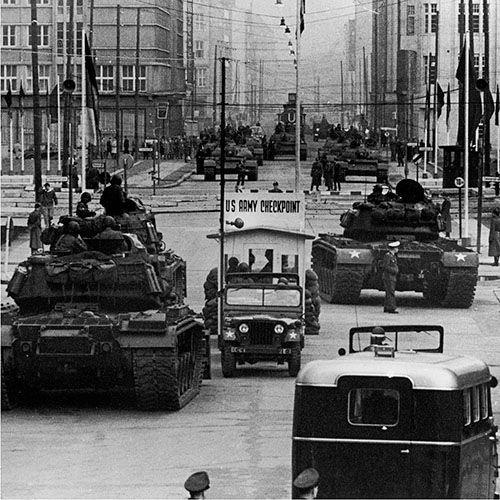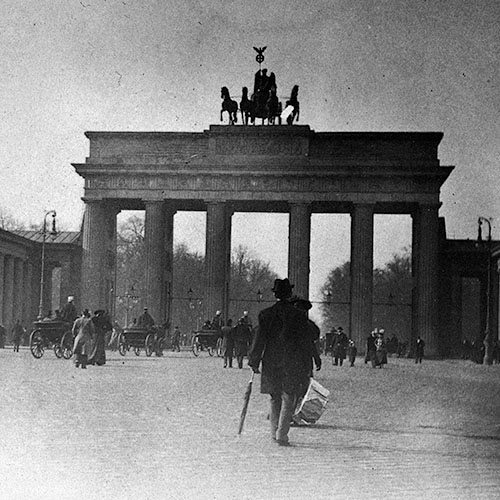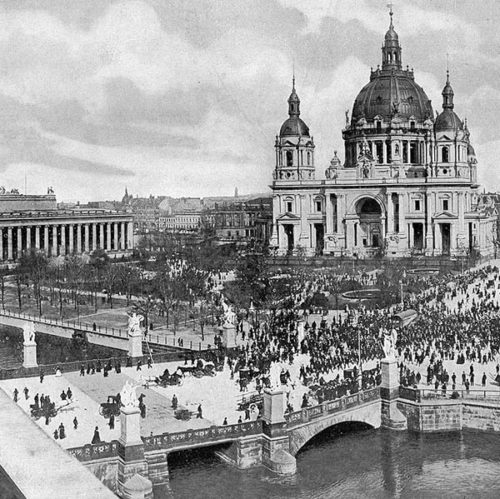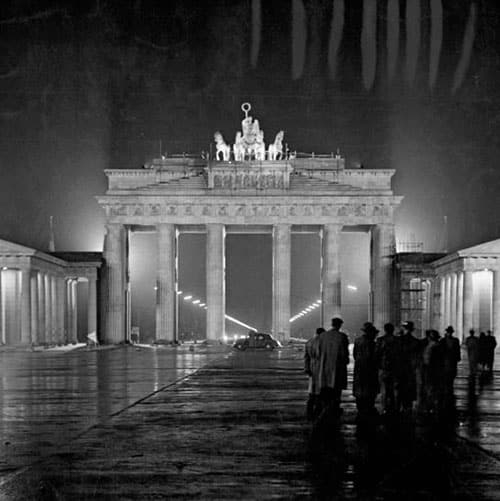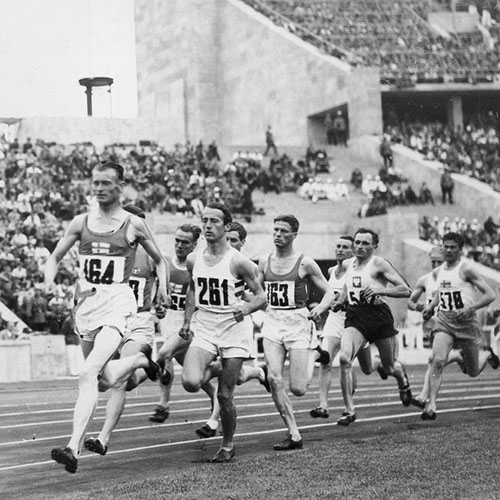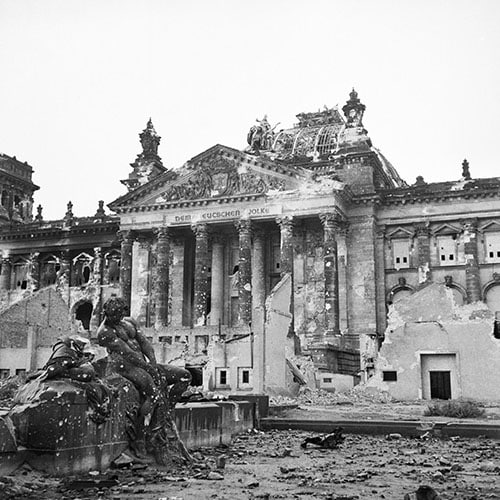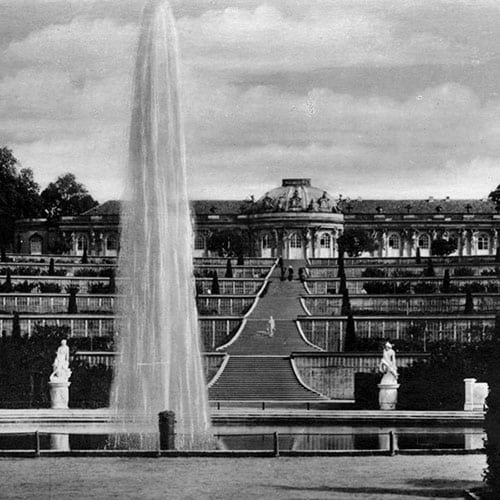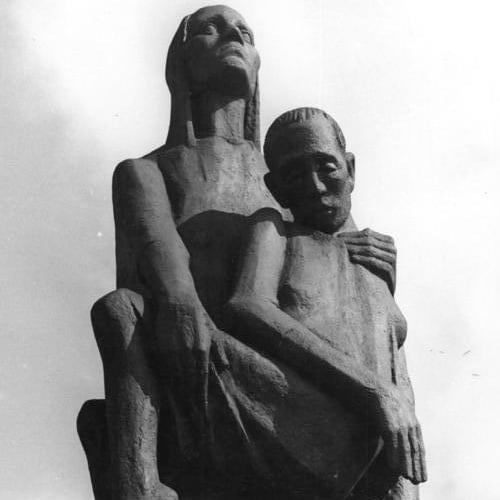“I can understand the Chinese Wall: it was built as a defense against marauders. But a wall such as that in Berlin, built to prevent people from seeking freedom, is almost beyond comprehension.”
Robert Kennedy
As the victorious Allies convened at the jaunty palace of Cecilienhof in July and August 1945, their agenda extended beyond the division and occupation of defeated Germany to the broader reordering of the European continent—and, with it, the shaping of a new world order. The Prussian city of Potsdam, with its plush gardens and resplendent royal residences, became the alternative meeting place just south-west of Berlin—the originally intended venue having been too ravaged by war to serve its purpose—for the final wartime gathering of the Big Three powers.
Beyond the major points discussed and agreed upon, there were numerous seemingly minor decisions that would, in fact, come to define the increasingly fraught relationship between the British-French-American West and the Soviet East in the decades of Cold War confrontation that followed.
The solidification of these opposing blocs into two rival German states would take another four years, but the cracks in their relationship were already visible, threatening to widen into tectonic shifts. To anyone even remotely familiar with the fundamentally opposed political systems of the ‘individualist’ West and the ‘collectivist’ East, it would have seemed self-evident that any pretense of friendship was bound to collapse into antagonism.
More than mere pragmatic negotiations, the agreements reached in Potsdam were the early outlines of ideological battle lines.
At the conference’s conclusion, US President Harry Truman proposed a follow-up meeting in Washington, D.C.—one that would never materialise. Hands were shaken, photos taken, and celebratory drinks poured.
Yet, for the time being, the pretense of cooperation, born of a shared struggle against a common enemy, had to be maintained.
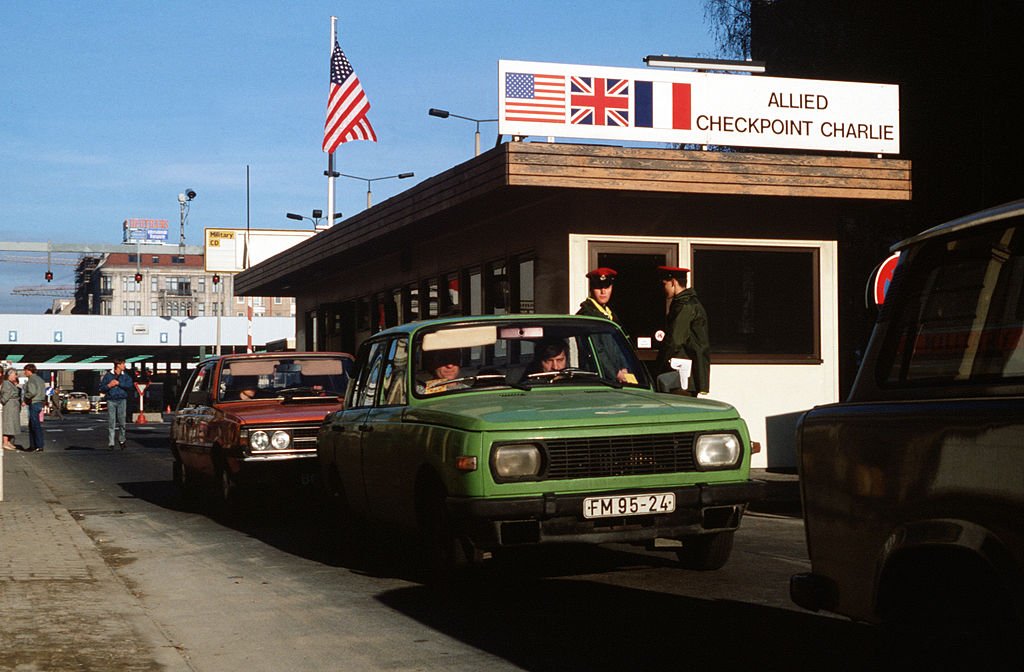
In that spirit, one of the lesser-known agreements at Potsdam—seemingly absurd under the circumstances—would come to play a significant role in shaping Cold War relations: the guarantee of freedom of movement for all Allied personnel.
No matter the proxy conflicts, diplomatic crises, or sabre-rattling confrontations that defined East-West tensions, this principle remained a respected outcome of the Potsdam Conference for the entirety of the Cold War.
Its most famous manifestation was Checkpoint Charlie in central Berlin, with its now-iconic border control station—a site that has since become one of the most visited tourist attractions in the reunified city.
–
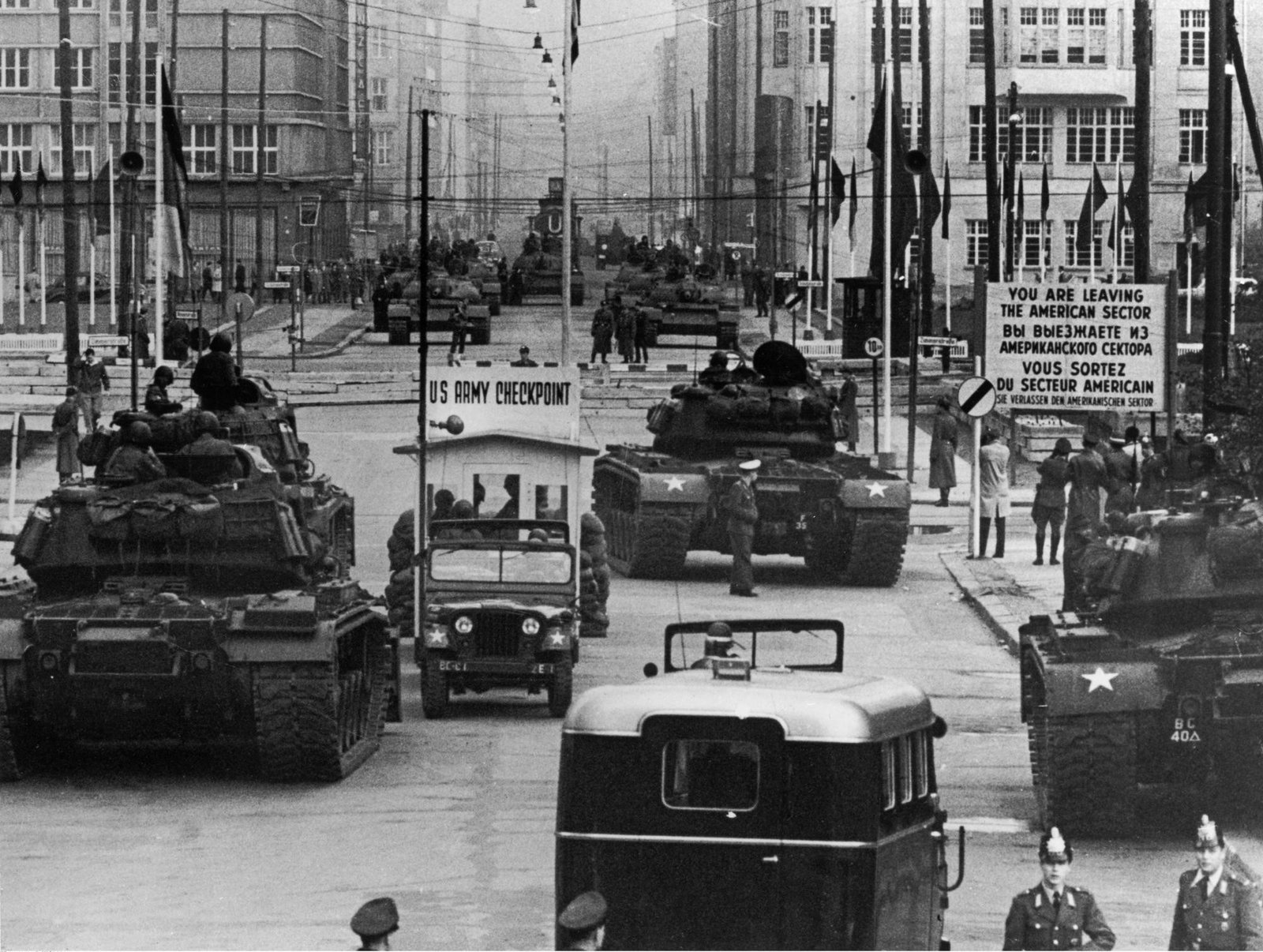
The Roots of Checkpoint Charlie
“Berlin is the testicle of the West. When I want the West to scream, I squeeze on Berlin.”
Nikita Khrushchev
To understand the development of Checkpoint Charlie, we must first step back and consider the peculiar position of West Berlin: a problematic ‘island of capitalism’ stranded inside East Germany, cut off from the rest of the Western world.
By 1961, with the construction of the Berlin Wall, the city had been reduced to a paradoxical prison—a surreal cage where only those inside were free.
Germany had been divided in 1945 into four occupation zones, with the Soviets controlling the East, including the cities of Leipzig, Magdeburg, Rostock, and Dresden. The British, French, and Americans administered the western and southern parts of the country, taking charge of cities such as Munich, Hamburg, Frankfurt, and Stuttgart.
Berlin, however, lay 150 km inside the Soviet zone. Though also divided into four sectors, the city was an Allied enclave deep within Soviet-controlled territory. The British, French, and Americans controlled the western districts, while the Soviets held the east—including the historic Mitte district, Berlin’s original core.
For the Western powers, this arrangement posed a serious conundrum: how to maintain a presence in a city that was entirely surrounded by hostile Soviet-controlled territory, especially as relations with their wartime ally deteriorated.
Ensuring access to West Berlin required navigating through East Germany—the territory that had originally been under Soviet control as part of the 1945 division of Germany and, for much of the Cold War, would exist as the German Democratic Republic (GDR).
By 1948, the first major crisis erupted: the Berlin Blockade. The Soviets cut off all land routes to West Berlin in an effort to starve out the Western Allies. The response? The Berlin Airlift, a massive logistical operation that kept the city supplied for nearly a year. The Soviets backed down, but the message was clear—Berlin would be the Cold War’s most volatile flashpoint.
By 1949, Germany had split into two separate states: the Western-aligned Federal Republic of Germany (FRG) and the Soviet-backed German Democratic Republic (GDR). And West Berlin? A capitalist outpost, awkwardly marooned deep inside the Communist bloc.
To guarantee access to the western sectors of Berlin, the Allies secured travel routes via road, rail, and air. Those driving to West Berlin had to travel 170 km along an Autobahn through East Germany, entering the city at Nikolassee (part of the US sector). For many, this journey began at the Helmstedt–Marienborn border crossing—known as Grenzübergang Helmstedt-Marienborn—which became the largest and most important crossing on the so-called Inner German Border.
Sitting on the demarcation line between the British and Soviet occupation zones, a checkpoint was established here on 1 July 1945 to monitor traffic—particularly vehicles and passengers heading east.
Over time, a designated control point for Allied personnel was introduced, named after the first letter of the modern ICAO phonetic alphabet: Checkpoint Alpha (from “Alfa”).
The Western Allies insisted on using the term ‘checkpoint’ rather than ‘border crossing point’, as the latter was used by the Soviets and East Germans, who sought to legitimise the East German state under international law. Until 1972, East Germany was officially considered by the West to be nothing more than the Soviet occupation zone.
A second checkpoint, marking the end of the 170 km transit route to Berlin, became known as Checkpoint Bravo (called Grenzübergangsstelle Drewitz-Dreilinden by the East Germans).
And finally, in the heart of Berlin, Checkpoint Charlie stood on Friedrichstraße, marking the border between the US and Soviet sectors of the city—between Kreuzberg and Mitte.

Like Alpha and Bravo, Checkpoint Charlie was officially a crossing point for Allied military personnel—primarily for US servicemen and women.
The phonetic alphabet from which these checkpoints took their names was standardised in 1956 as the official NATO radio code. Had history unfolded differently, they might have been named after earlier phonetic alphabets—perhaps Checkpoints Amsterdam, Baltimore, and Casablanca.
But soon, the names Alpha, Bravo, and Charlie became synonymous with their locations, regardless of whether they were used for military, diplomatic, or civilian purposes.
While primarily intended for Allied officials, the checkpoint at Friedrichstraße was also a gateway for diplomats, tourists, and other visitors from the West, who crossed into East Berlin to witness firsthand the so-called Workers’ and Peasants’ Paradise of the Marxist-Leninist state.
Although Checkpoint Charlie was built for official Allied use, Western tourists also passed through it, following the same transport corridor as military personnel. However, they were not processed at the same control post; instead, they were inspected by East German border guards at Grenzübergang Friedrichstraße, the official GDR checkpoint on the eastern side of the crossing.
–
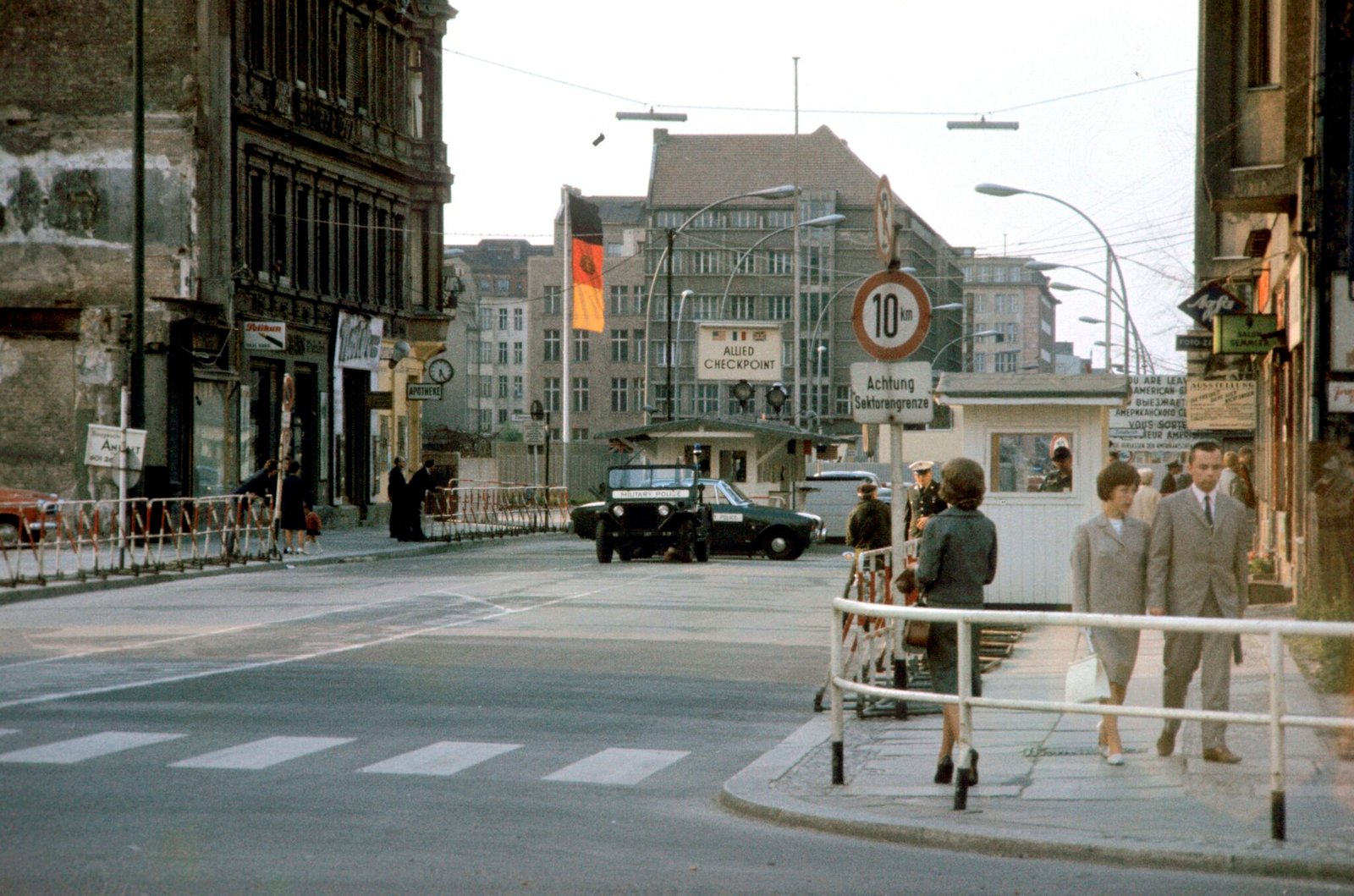
The Berlin Wall & Checkpoint Charlie Stand-Off
“It’s not a very nice solution, but a wall is a hell of a lot better than a war.”
John F. Kennedy
The Soviets were not always so cordial or welcoming on the eastern side of the city.
In fact, it was here, in October 1961, that the United States and the Soviet Union came closer to direct military confrontation than at any other point in the Cold War.
The Berlin Wall had been standing for just over two months, hastily erected by the East German authorities on 13 August 1961 to stem the exodus of people fleeing from the Soviet sector into West Berlin.
At the time, the question of how this barrier would affect the post-war freedom of movement agreement remained unresolved.

On 22 October 1961, the assistant chief of the U.S. Mission in Berlin, E. Allan Lightner Jr., attempted to enter East Berlin with his wife to attend a performance by a Czech theatre group. When East German border guards demanded to see his passport—something they had no right to request under the Four-Power Agreement—Lightner refused. US military police were called to escort him through. Furious at this assertion of Allied authority, the Soviets responded by sending in their tanks.
For sixteen tense hours, Soviet and American tanks faced off at Checkpoint Charlie, their turrets trained on one another, fingers on the triggers. Any miscalculation, any nervous twitch, could have led to war.

Finally, after frantic backchannel negotiations between US President John F. Kennedy and Soviet Premier Nikita Khrushchev, both sides agreed to withdraw. The tanks rumbled away, but the message was clear: Berlin was the Cold War’s frontline, and Checkpoint Charlie was the last Western outpost. Neither side was willing to back down.
Although the Western powers publicly opposed the construction of the Berlin Wall, its very existence brought a certain grim stability to the standoff. The October flare-up at Checkpoint Charlie was the storm’s peak before the tide receded into an uneasy calm.
Kennedy, ever the realist, summed it up bluntly: “It’s not a very nice solution, but a wall is a hell of a lot better than a war.”
–
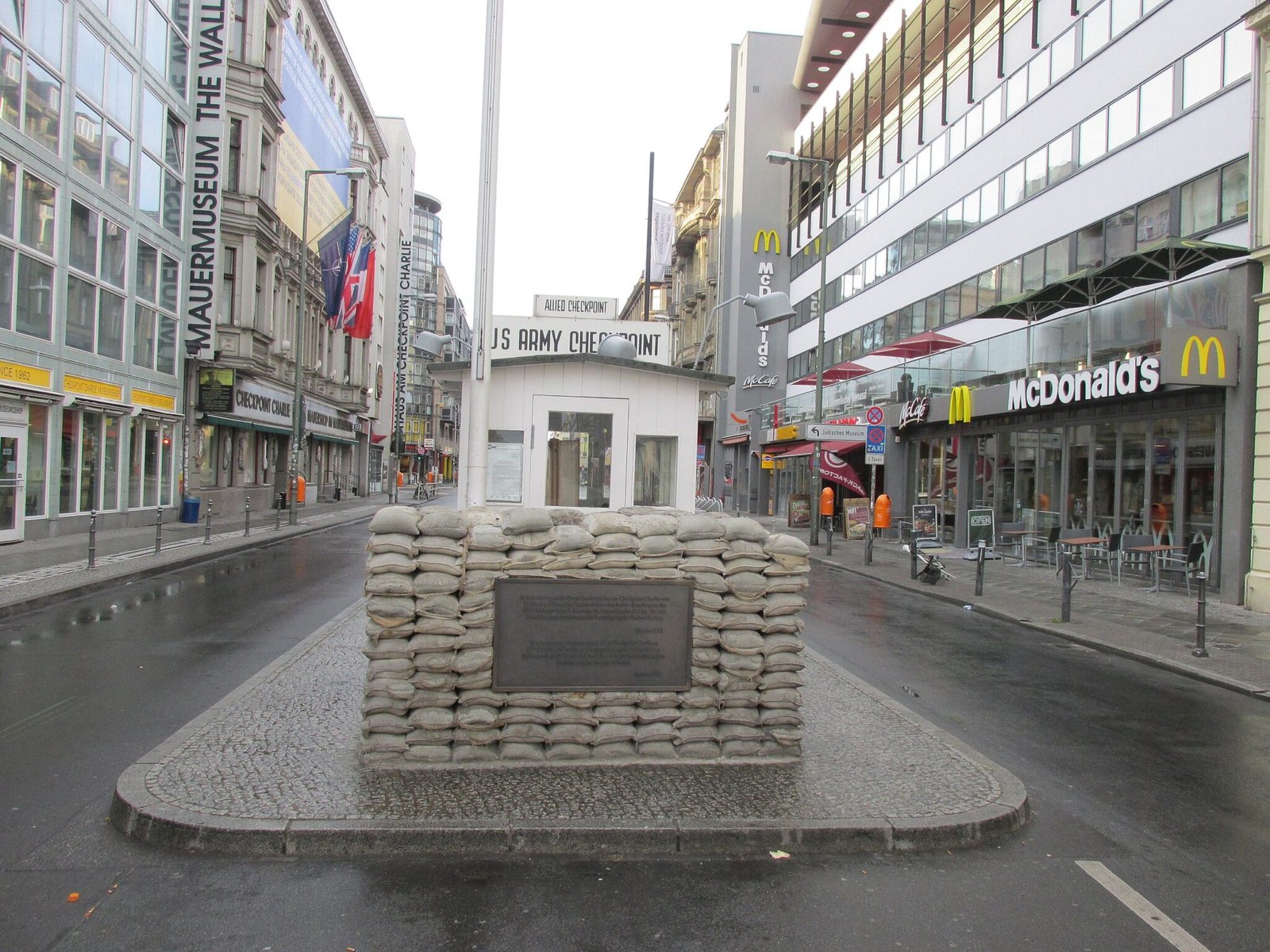
Checkpoint Charlie Nowadays
“The world has to decide if shops or fast-food stands are appropriate for this site or a memorial.”
Alexandra Hildebrandt; manager of the Checkpoint Charlie Museum
The name of the location lives on, but what once stood at this pivotal junction has long disappeared.
Beyond its geopolitical significance, Checkpoint Charlie became synonymous with the murky world of espionage. The area around the checkpoint teemed with double agents, Stasi informants, and CIA operatives. Spy novels and films immortalised it as a place where East met West, where defectors risked their lives, and where betrayals unfolded in the dead of night. It featured in countless books and films, from The Spy Who Came in from the Cold to James Bond’s Octopussy.
Today, the scene is markedly different. Tourists jostle for the best photo angles, while pickpockets weave through the crowds. Groups dash across one of Berlin’s last major junctions without traffic lights or pedestrian crossings.
A facsimile of the famous sign declaring “You are leaving the American sector” stands in place of the original. A replica wooden guardhouse sits at the centre of the street (the original is now housed in the Allied Museum in Dahlem), its historical weight overshadowed by the golden arches of a nearby McDonald’s.
With the fall of the Berlin Wall in 1989, Checkpoint Charlie lost its function overnight. The original military post was dismantled in 1990. Until recently, a Starbucks and Domino’s Pizza joined the McDonald’s and KFC, a fitting—if unintentional—nod to the fast-food staples of the former US sector.
Of all the authentic historical sites in Berlin, the current carnivalesque rendition of Checkpoint Charlie would struggle to make the list.
And yet, it remains a must-see—perhaps more for what it isn’t than for what it is. A relic of what once was, and—thankfully—what no longer needs to be.
**
Conclusion
Checkpoint Charlie was the Allied crossing point from the US sector into the Soviet sector of Cold War divided Berlin. The final of three crossing points, named after the NATO phonetic alphabet – Alfa, Bravo, Charlie.
***
If you’ve enjoyed reading this article, consider booking one of our private guided tours of Berlin.
HISTORICAL ARTICLES
Mythbusting Berlin

Are There Any Nazi Statues Left In Berlin? – Mythbusting Berlin
Visitors to Berlin often arrive expecting to find the physical remnants of the tyranny of the 20th century still standing – statues of dictators, triumphal arches, or bronze idols. Instead, they often find none. The stone symbols and statues of the Third Reich are still gazing down on them, however, hiding in plain sight. But why are there no statues of Hitler? Did the Allies destroy them all in 1945, or is the truth stranger
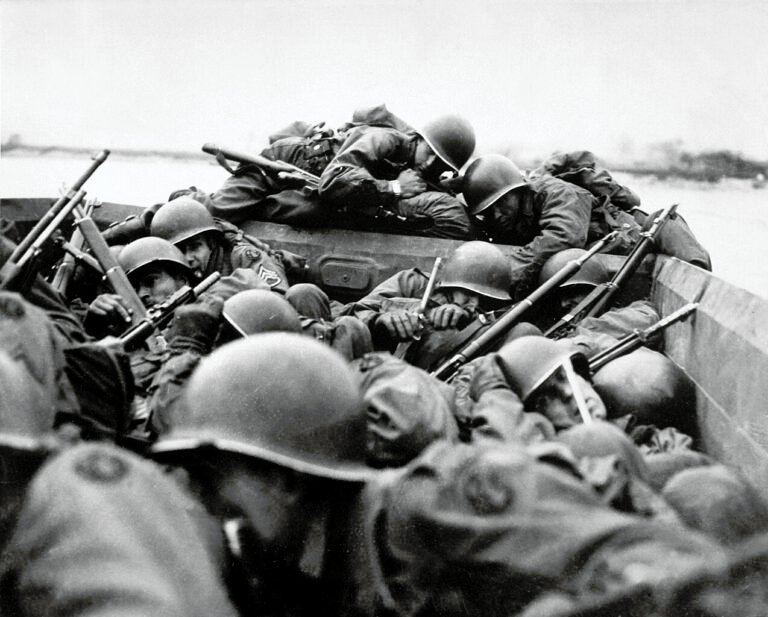
Could The Western Allies Have Captured Berlin? – Mythbusting Berlin
To contemplate a Western Allied capture of Berlin in 1945 is to challenge the established endgame of the Second World War. What was the true military and logistical feasibility of a Western Allied assault on the Nazi capital? What factors truly sealed Berlin’s fate, and what might have changed had the Allies pushed eastward?
Answering these questions means delving into the complex interplay of logistics, political maneuvering, and the competing visions for a post-war world
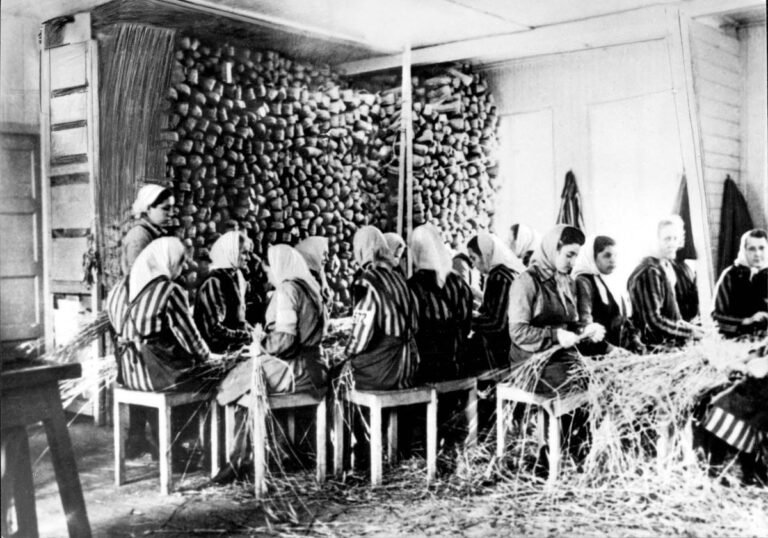
Did Any Of The Rothschild Dynasty Die In The Holocaust? – Mythbusting Berlin
The Rothschild name is synonymous with immense wealth, influence, and persistent conspiracy theories—especially during the era of Nazi Germany. Often targeted by antisemitic propaganda, the family’s survival during World War II has sparked myths about their supposed immunity from Nazi persecution. But did any Rothschild family member actually perish in the Holocaust? This article explores that compelling question, unraveling historical misconceptions and revealing the reality behind one of Europe’s most famous dynasties.
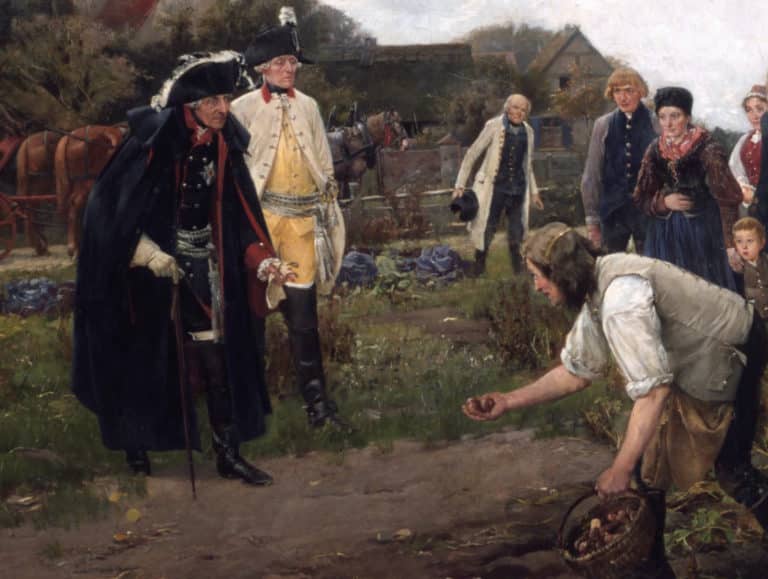
Did Frederick The Great Introduce The Potato To Germany? – Mythbusting Berlin
One of the more bizarre claims to fame attributed to the first King of Prussia is that the man who would go down in history known as Frederick the Great introduced the potato to Germany during his reign back in the 1700s. This starchy root vegetable has undoubtedly become a staple part of German cuisine – an essential addition to any plate of Schnitzel, Schweinshaxn, and Königsberger Klopse – however, whether Frederick the Great is
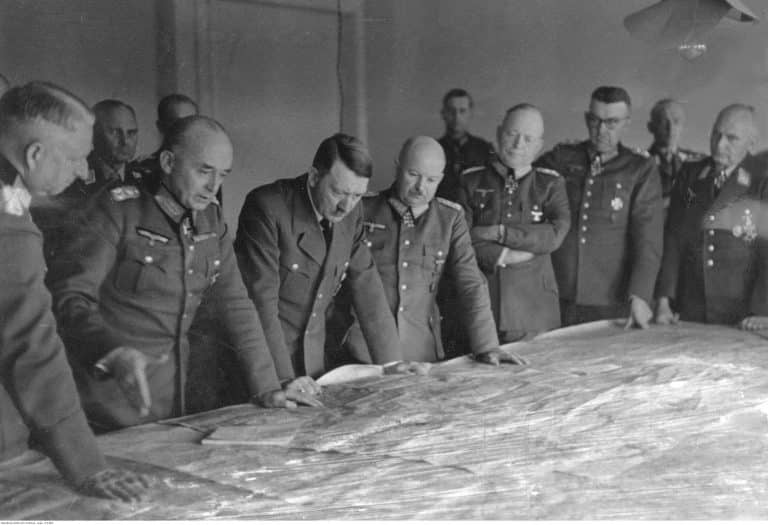
Did Hitler Escape To Argentina In 1945? – Mythbusting Berlin
Although Nazi leader, Adolf Hitler, certainly remains an inescapable figure, could there be any truth to the story of his escape to Argentina in 1945? That the most wanted man on earth could simply vanish, to spend the rest of his life peacefully in South American obscurity captivates imaginations. Yet, despite numerous investigations, this tale persists primarily as myth—fueled by speculation, hearsay, and conspiracy theories.
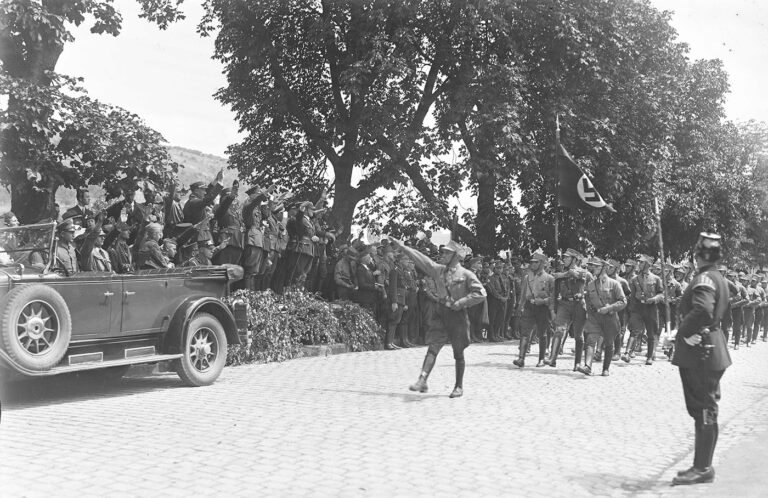
Did Hugo Boss Design The Nazi Uniforms? – Mythbusting Berlin
The idea that Hugo Boss – the man whose name now adorns expensive suits and fragrances – was the creative genius behind the Nazi uniforms suggests a terrifying collision of haute couture and holocaust – a marriage of high style and high crimes. The image is striking: a German tailor sketching the ultimate villain’s costume. But history, as usual, is far messier, more bureaucratic, and more banal than the internet memes suggest. To understand who
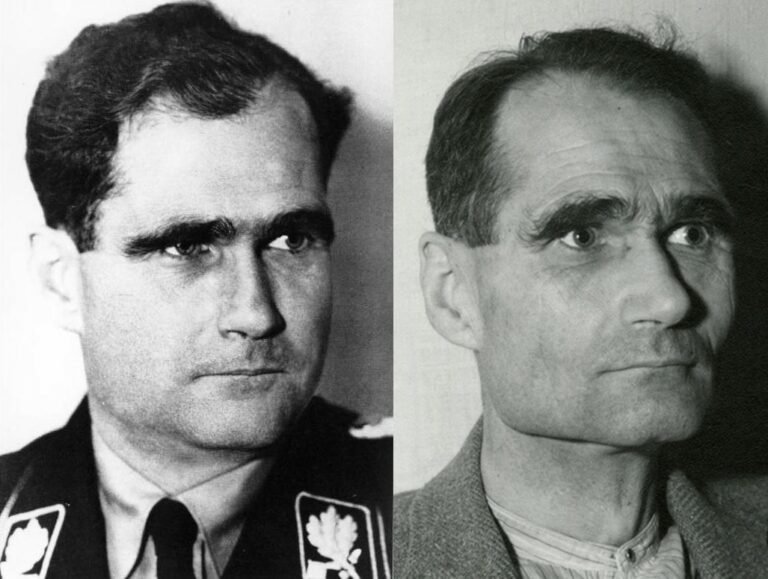
Did Rudolf Hess Really Commit Suicide? – Mythbusting Berlin
On a summer’s day in 1987, the last Nazi war criminal of the Nuremberg trials was found dead in a prison built for hundreds, yet for two decades, housed only him. The official verdict was suicide, a straightforward end to a life defined by fanaticism, delusion, and contradiction.
But the simplicity of the report belied the complexity of the man and the 46 years he had spent in Allied custody. In the meticulously controlled
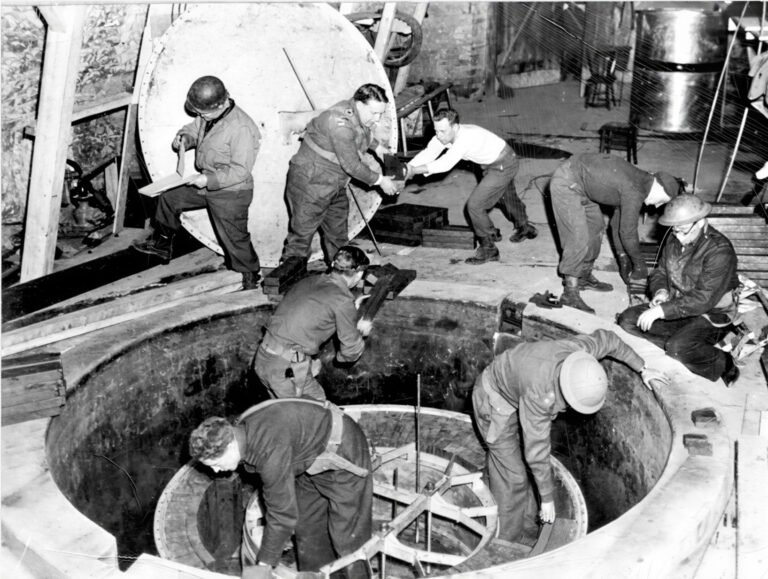
Did The Nazis Develop Nuclear Weapons? – Mythbusting Berlin
The Nazi obsession with super-weapons became so serious in the closing stages of the Second World that Adolf Hitler personally believed that such ‘Wunderwaffen’ both existed in a usable form – and would save the country from defeat. Had the Nazis managed to develop nuclear weapons by 1945 – the outcome of the war would surely have been different. But how close were Hitler, Himmler, and his henchmen to developing an A-bomb?

Did The Nazis Invent Decaf Coffee? – Mythbusting Berlin
Persistent rumors claim that Nazis preferred their coffee anything but pure, leading some to wonder if they might have influenced the development of decaffeinated coffee. Although decaf was already widely available across Europe by the mid-20th century, speculation continues: could the Nazis really have played a role in popularizing—or even discovering—this caffeine-free alternative, or is this simply another caffeinated conspiracy cooked up to sensationalize an ordinary historical detail?

Did The Nazis Invent The Bicycle Reflector? – Mythbusting Berlin
The fruits of wartime ingenuity are plenty – so many, in-fact, that it has become somewhat of a worn cliche that as the guns start firing the innovators get to work, often solving problems while providing more problems for the enemy to overcome.The kind of progress that results in the production of newer improved, more lethal weapons, such as to increase the chances of victory.
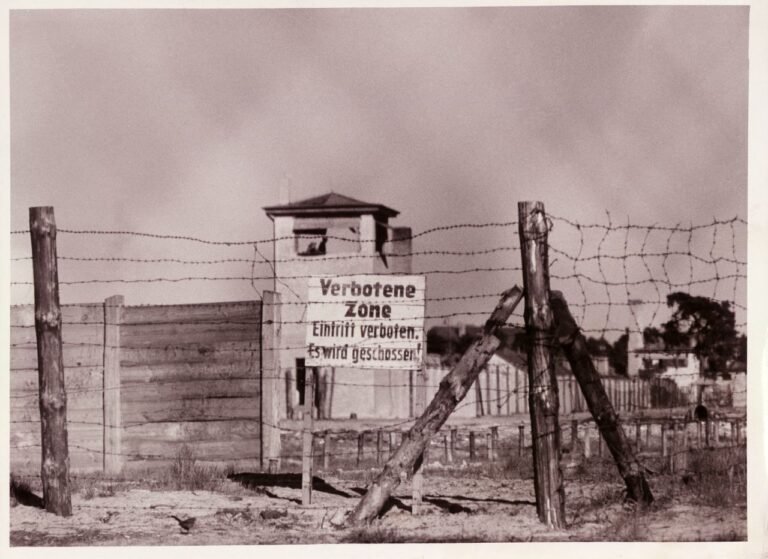
Did The Nazis Run The Largest Counterfeiting Operation In History? – Mythbusting Berlin
During the Second World War the Nazis masterminded an astonishing plot to destabilise Britain by flooding its economy with counterfeit banknotes. Crafted in secret by concentration camp prisoners, this forged fortune became the most ambitious counterfeiting operation ever attempted. But was it history’s largest? Dive into the extraordinary tale of Operation Bernhard,
rife with deception, survival, and intrigue—revealing the truth behind one of the Third Reich’s most audacious schemes and its surprising legacy.
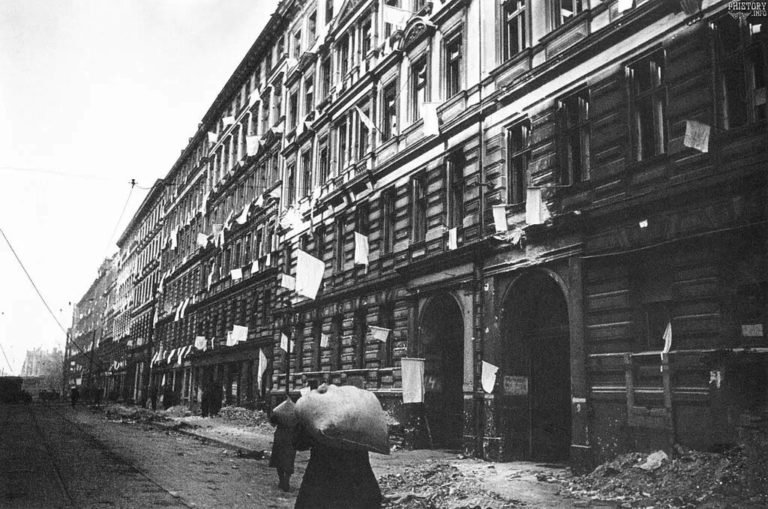
Did The Second World War End In Berlin? – Mythbusting Berlin
When is a war ever truly over? When the last shot is fired in anger would seem like the best measure. Rarely, though, is it possible to gain insight into such a moment.
Remarkably, a record still exists of such a moment at the end of the First World War on the Western Front. A seismic register and recording of the last belching battery of British guns firing artillery across no-man’s-land, followed by a profound
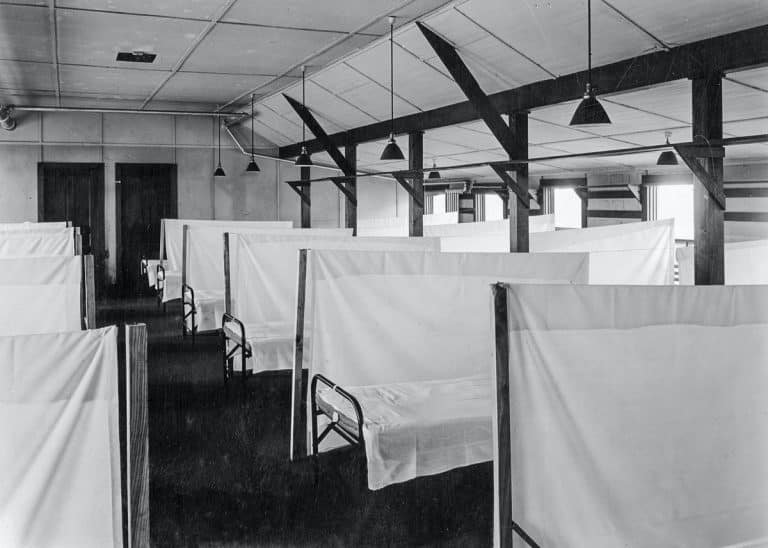
Did The Spanish Flu Pandemic Help The Nazis Take Power? – Mythbusting Berlin
The devastating Spanish Flu pandemic of 1918-1919 struck amid Germany’s post-war turmoil, compounding social instability, economic hardship, and widespread political disillusionment. Could this catastrophic health crisis have indirectly paved the way for Nazi ascension? While often overshadowed by war and revolution, the pandemic’s profound psychological and societal impacts arguably contributed to the perfect storm, enabling extremist ideologies—including Nazism—to gain popularity and ultimately seize power in a fractured Germany.

How Many Assassination Attempts On Adolf Hitler Were There? – Mythbusting Berlin
Nazi leader, Adolf Hitler, projected an aura of invincibility, a man of destiny shielded by providence. But behind the carefully constructed image of the untouchable Führer lies a story of constant threat, of bombs that failed to detonate, and errant bullets that missed their mark. Unearth the hidden history of the numerous attempts on Hitler’s life as we explore the courage of those who tried to change the course of history and the devil’s luck
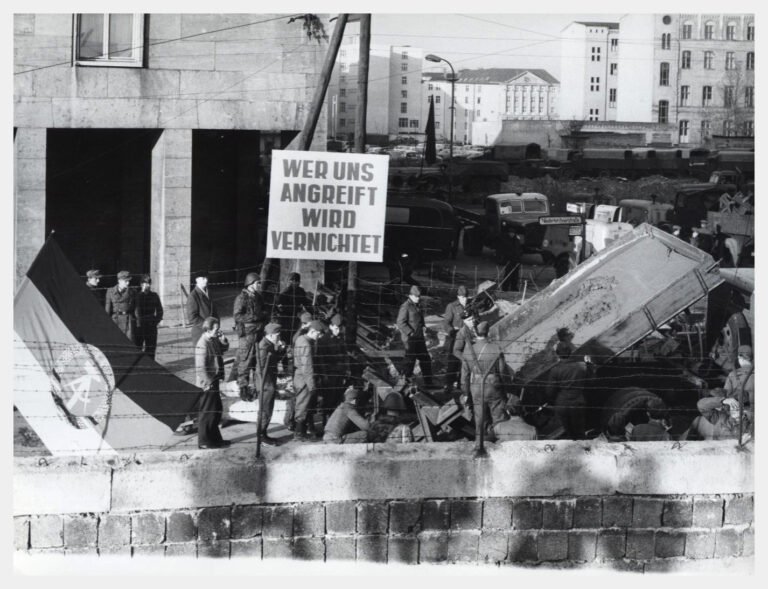
How Many People Died Trying To Escape East Germany? – Mythbusting Berlin
The image of the Berlin Wall is seared into our collective memory, a concrete symbol of Cold War oppression. We think of the daring escapes and the tragic deaths of those who failed. But that well-known number is only a fraction of the truth. The story of those who died trying to escape East Germany is far broader and more complex than most imagine, stretching along a thousand-kilometer border and out into the cold waters
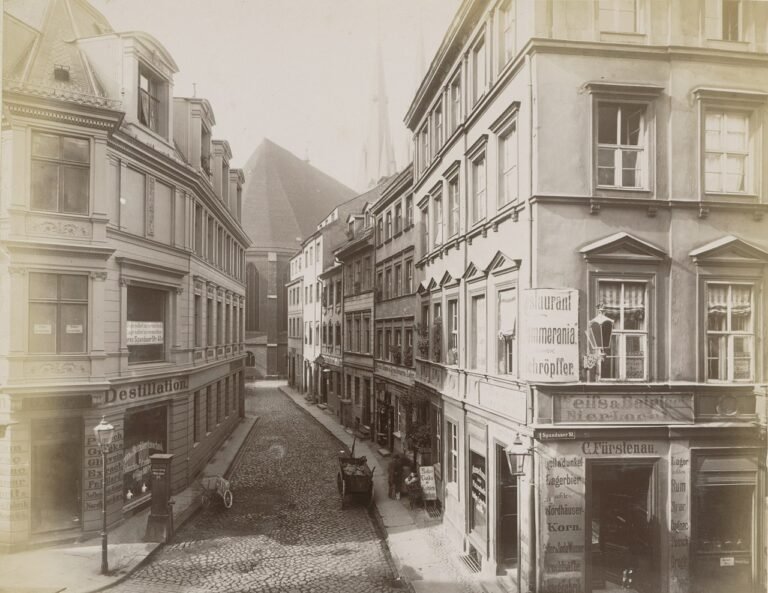
How Old Is Berlin? – Mythbusting Berlin
A relatively new arrival in Europe, Berlin is over 1000 years younger than London, nevermind Rome or Athens, Jerusalem or Jericho. Just how old is Berlin though?
A question fraught with false assumptions and distortions – that has more often than not been answered with propaganda as it has with the cold hard truth.
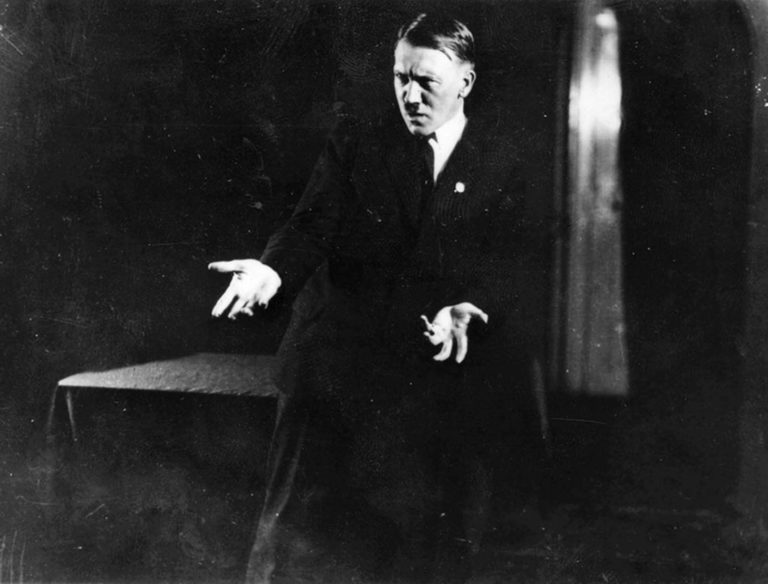
Was Adolf Hitler A Drug Addict? – Mythbusting Berlin
Solving the enigma of the ‘Führer’ has become a preoccupation for many, since the arrival of the Austrian-German onto the world stage – although moving beyond the mythology without falling into the trap of prejudically extrapolating on the psychopathography of Hitler or demonising so as to excuse his actions has proven problematic. What to make of the man who became more than the sum of his masks? The painter; the military dilettante, the mass murderer,

Was Adolf Hitler Gay? – Mythbusting Berlin
In the shadowy corridors of Third Reich history, few questions provoke as much tabloid curiosity and scholarly exasperation as the sexuality of Adolf Hitler. For decades, rumors have swirled—whispered by political enemies in 1930s Munich, psychoanalyzed by American spies in the 1940s, and sensationalized by revisionist authors today. Was the dictator who condemned thousands of men to concentration camps for “deviant” behavior hiding a secret of his own? By peeling back the layers of propaganda,
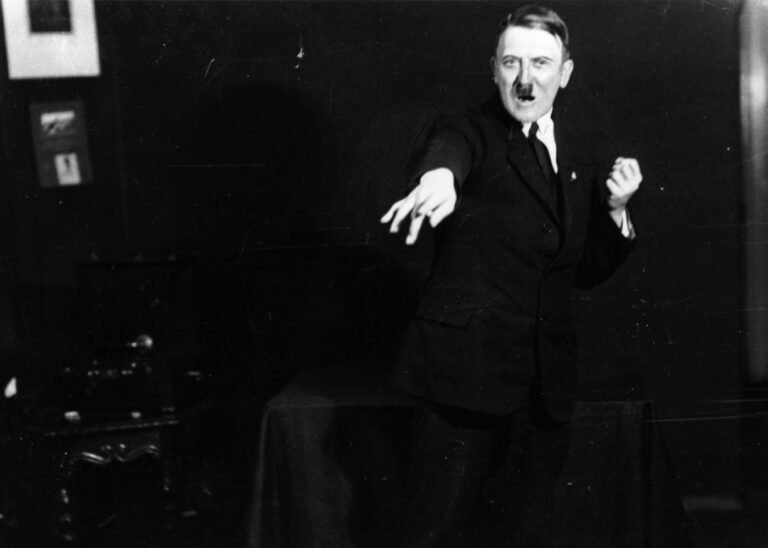
Was Adolf Hitler Jewish? – Mythbusting Berlin
Was the dictator who orchestrated the murder of millions of European Jews secretly one of them? It is perhaps the darkest irony imaginable, a story whispered for decades in backrooms, bars, and conspiracy forums alike. The most-common rumour – the ‘Frankenberger Myth’ – suggests that Adolf Hitler’s paternal grandfather was Jewish, a secret so damaging it could have unraveled the entire Nazi regime. But where does this claim come from? And, more importantly, is there
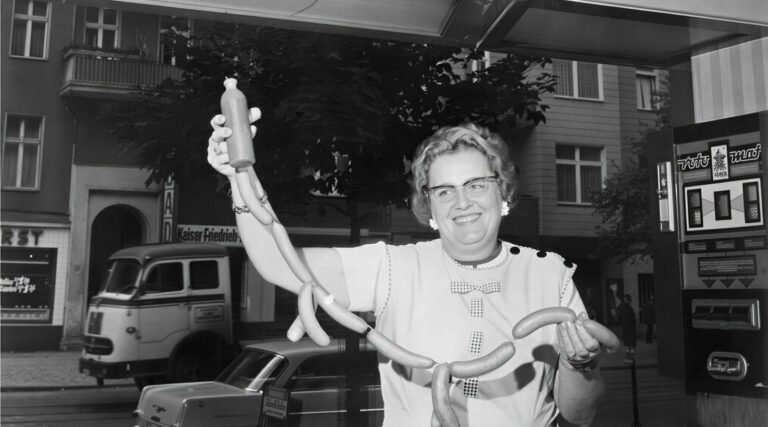
Was Currywurst Invented In Berlin? – Mythbusting Berlin
Explore the story behind what many consider Berlin’s most iconic snack—the ever-so-humble Currywurst. Often hailed as an enduring symbol of culinary creativity amid Cold War scarcity, this humble dish has inspired fierce debate about its true origin. But was it genuinely invented here in Berlin, or have proud locals simply adopted and elevated this spicy street-food favorite into legendary status all their own?



